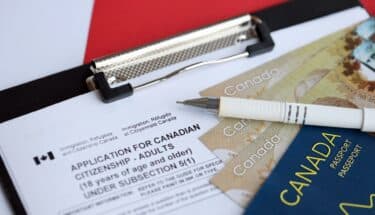What is the CLB?
The Canadian Language Benchmarks (CLB) is a standardized measure of English language proficiency for those looking to immigrate to Canada. It assesses four areas: listening, speaking, reading, and writing. Each skilled worker immigration program has certain requirements regarding the results of language tests. The Canadian Language Benchmark (CLB) is a standardized method used by the Canadian government to assess language proficiency. While some programs for skilled workers demand a CLB level of at least 7, others just require a level of 4. To find out what CLB level you’ll need to be eligible for your chosen skilled worker immigration program, it’s crucial to thoroughly read over its requirements.
Accepted Language Tests for Canadian Immigration
To demonstrate your language proficiency for Canadian immigration programs, you must take one of the accepted language tests. These include:
English:
- IELTS (International English Language Testing System) – General Training
- CELPIP (Canadian English Language Proficiency Index Program) – General
- PTE Core: Pearson Test of English
French:
- TCF Canada (Test de connaissance du français)
- TEF Canada (Test d’évaluation de français)
Minimum CLB Levels for Different Canadian Immigration Programs
Below is a table that outlines the minimum CLB levels required for various permanent residence (PR) streams, as well as the requirements for Canadian citizenship. Note that while temporary residence applications such as work permits or study permits do not typically have mandatory minimum CLB levels, your application could be refused if you do not demonstrate sufficient language ability to succeed in your job or program of study.
Additionally, for all PR applications, your language test results must be less than two years old at the time of application.
| PR Stream / Citizenship | Listening | Speaking | Reading | Writing |
|---|---|---|---|---|
| Canadian Experience Class (CEC) – NOC 0 or A | 7 | 7 | 7 | 7 |
| Canadian Experience Class (CEC) – NOC B | 5 | 5 | 5 | 5 |
| Federal Skilled Worker (FSW) | 7 | 7 | 7 | 7 |
| Federal Skilled Trades (FST) | 5 | 5 | 4 | 4 |
| Caregiver Pilots (Home Child Care Provider & Home Support Worker) | 5 | 5 | 5 | 5 |
| Start-up Visa Program | 5 | 5 | 5 | 5 |
| Self-Employed Persons Program | 5 | 5 | 5 | 5 |
| Provincial Nominee Program (PNP) (varies by province and job) | Varies | Varies | Varies | Varies |
| Atlantic Immigration Pilot Program (TEER 0, 1, 2 or 3) | 5 | 5 | 5 | 5 |
| Atlantic Immigration Pilot Program TEER 4 | 4 | 4 | 4 | 4 |
| Rural and Northern Immigration Pilot TEER 0 or 1 | 4 | 4 | 4 | 4 |
| Rural and Northern Immigration Pilot TEER 2 or 3 | 5 | 5 | 5 | 5 |
| Rural and Northern Immigration Pilot, TEER 4 or 5
Agri-Food Pilot |
5 4 4 |
5
4 4 |
5
4 4 |
5 4 4 |
| Grant of Canadian Citizenship | 4 | 4 | 4 | 4 |
Temporary Residence Applications
It is generally not mandatory to reach a minimum CLB level for temporary residence applications such as work permits or study permits. However, if you cannot demonstrate that you have a high enough level of language ability to be successful in the job or program of study, your application can easily be refused.
Validity of Language Test Results
For all PR applications, it is important to note that your language test results must be less than two years old at the time of application. This ensures that your language proficiency is current and accurately reflects your ability to communicate in Canada.
Understanding the CLB requirements and ensuring your test results meet the necessary benchmarks is crucial for a successful immigration application to Canada.




